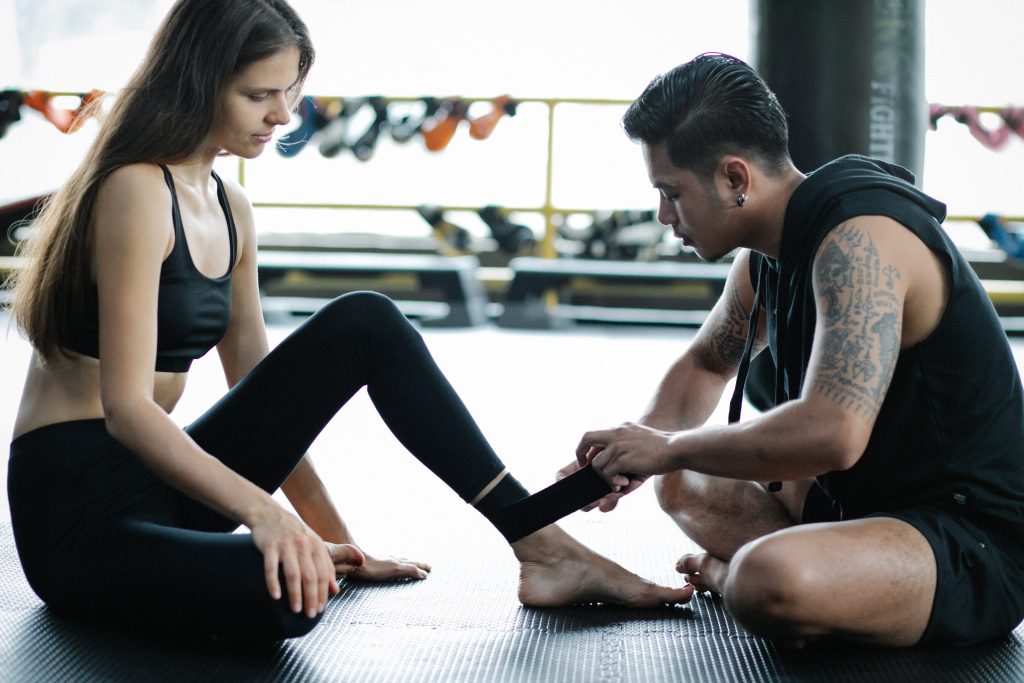
In the realm of athletics and sports-related activities, the people behind them try to make things as safe as possible. Even with that in mind, nobody can make anything 100% safe, including competitive sports.
Experts in numerous fields have developed a way to both support and mend a variety of sports injuries. This ingenious concept is athletic taping. In this article, we will delve into how anybody can use it, particularly for injury prevention. But first, let’s go back to basics with athletic taping.
What is Athletic Taping?
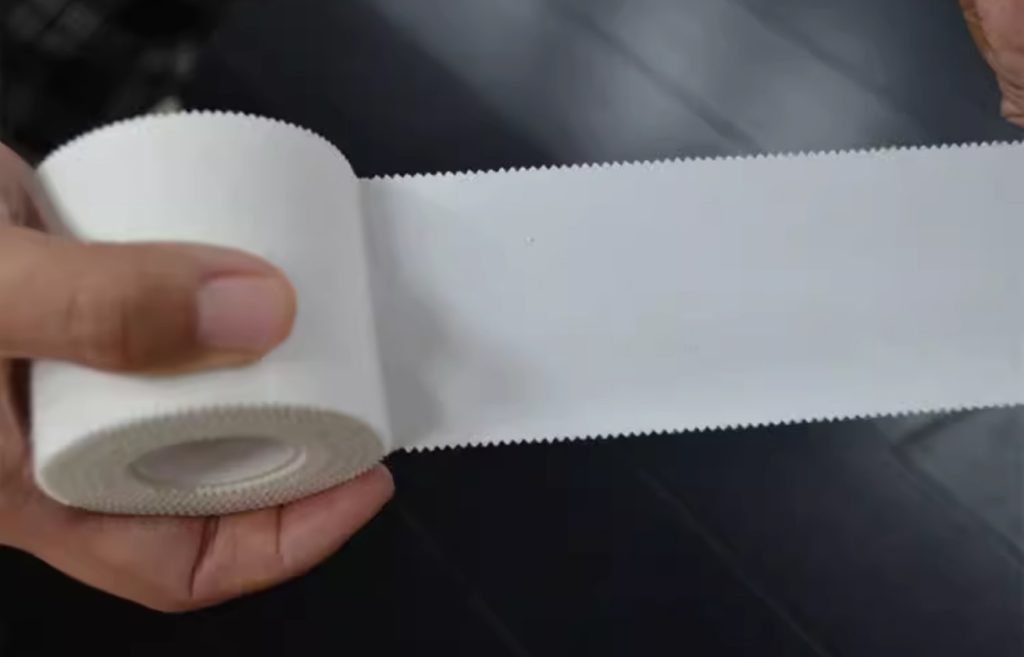
In any form of sports-related injury, there’s a chance that athletic taping was made an option for healing and recovery. Athletic tapes, when applied correctly, limit the range of motion of a joint or limb. In doing so, it helps that part of your body heal quicker.
Taping for sports injury prevention is commonly associated with treating less severe injuries later.. People tend to overlook its remarkable properties for injury prevention. Along with bracing, journals even concluded that there’s a significant decrease in ankle sprains when preventative taping is used.
Understanding Athletic Taping
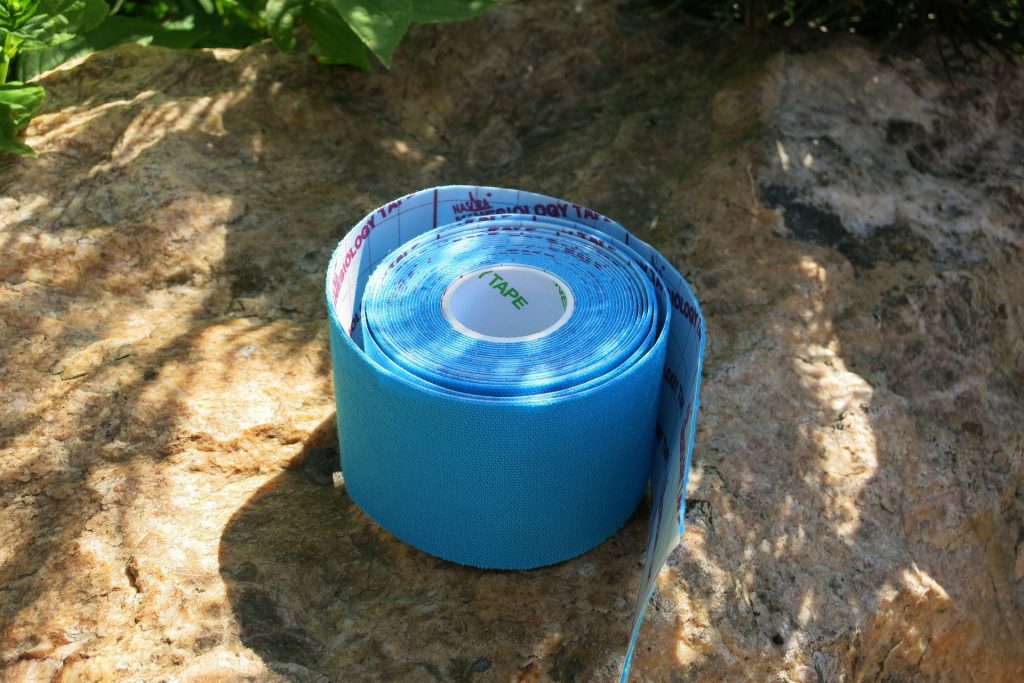
Athletic taping, in general, is the use of a specific type of tape and bandages called athletic tape. Akin to therapeutic tapes such as surgical tape, this tape is very pressure-sensitive and sometimes elastic.
When somebody mentions athletic tape, most likely they mean zinc oxide tape. Zinc oxide tape is composed of cotton fabric and zinc oxide based adhesive. Learn more about taping with zinc oxide herehttps://www.gulfphysio.com/product/zinc-oxide-taping/.. It’s best for compression in any sport. As for the other sports medicine tapes you can use for athletic taping, they vary based on usage and purpose.
The History of Athletic Taping
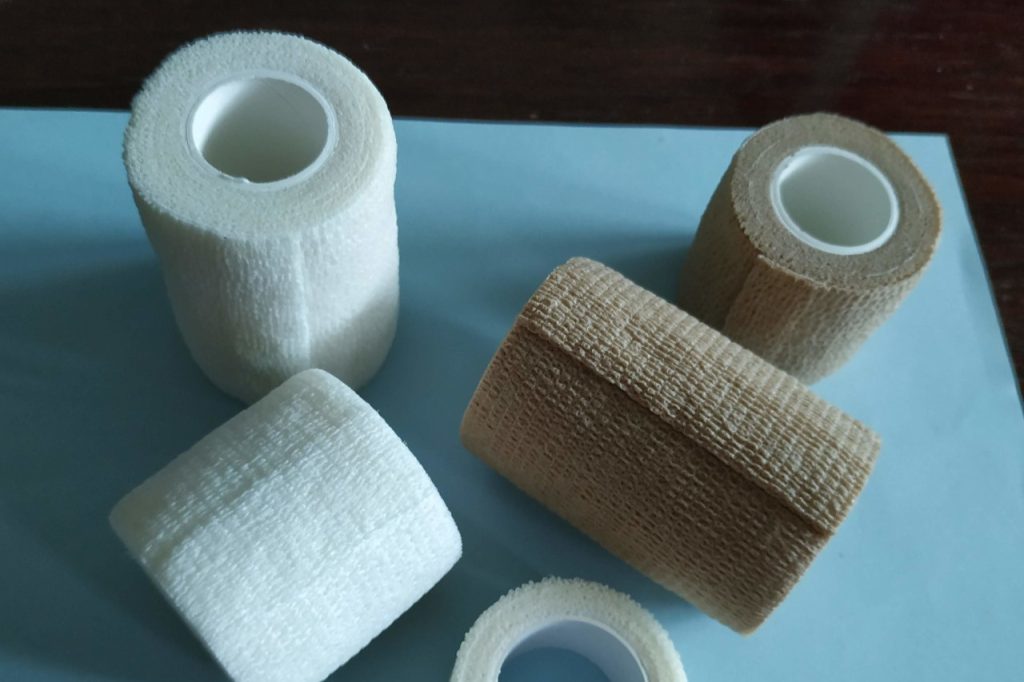
Before the advent of athletic taping, people discovered the beneficial properties of zinc oxide way back in 2,000 BC. Over time, it was used as a salve for skin wounds. There are numerous accounts from regions all across the world. Some of them include India starting in 500 BC, China in the 1600s, and Europe in the 1850s.
By the 1870s-1880s, doctors revolutionised the taping game. Dr. Horace Day was one of the first to utilise taping by making his own out of fabric and turpentine. The first written journal about medical taping was written by Dr. Edward Cotterell in 1885. Another article further explored his teachings in 1888 by Dr. Virgil Gibney.
Zinc oxide came into play again when companies such as Johnson & Johnson offered ready-made adhesive plasters. These were used to stabilise weak joints. Such strapping even made an appearance in a 1903 video about the fire-ever filmed football game between Princeton and Yale. Over a hundred years after that, new tapes appear.
Ever since then, taping has been almost exclusively synonymous with sports games. There’s even a branch of medicine dedicated to treating and preventing sports-related injuries. Through the years, you can see the benefits sports medicine taping gives for both recovery and preventive measures.
Common Sports-Related Injuries
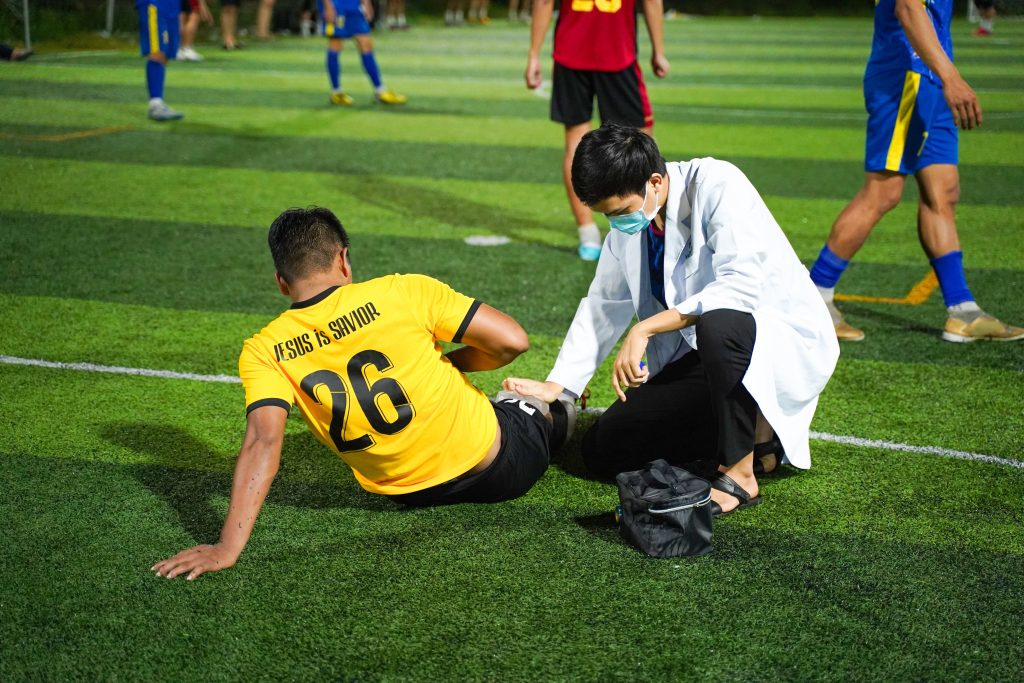
Competitive sports have come a long way in terms of safety and security. Advancements such as monitoring and full-game surveillance have helped any player feel at ease. With that being said, nothing is 100% safe. These following injuries can still occur at any level of the game. Below are the common types of sports injuries any athlete could be susceptible to.
Acute Injuries
Acute injuries take place rather suddenly and even by accident. They usually happen because of an unexpected blow or fall, causing the player to be in immense pain. They’re not as common as chronic injuries, but they’re still concerning depending on the severity of the impact.
Due to the trauma, acute injuries are also known as traumatic injuries by some. These injuries can be pretty severe at times. More often than not, people who sustain them need immediate medical attention and follow-ups with a specialist.
Acute injuries like head traumas and concussions can happen frequently in games such as football and rugby. A player’s knees, legs, ankles, shoulders, and fingers are also susceptible to sprains, dislocations, and fractures in other high-contact sports. With taping, it can decrease the likelihood of injuries such as these.
Chronic Injuries
As opposed to acute injuries, this type of damage can occur even without you noticing it happening at times. Chronic injuries grow from long-term repetition of various movements during athletics or any physicality over time. The strain on that specific part of your body builds until it becomes difficult to move or even permanent.
Also called overuse injuries, they’re more prevalent in sports such as cycling, tennis, and baseball, particularly in the pros division. Chronic pain, runner’s knee, or any long-term injuries involving the wrist, hand, elbow, and shoulder are some of the most common. The use of preventive taping can greatly reduce overuse injuries in the long run.
Athletic Taping for Injury Prevention: A Step-By-Step Guide
In the sports industry, getting a sprain is a make-or-break situation. These acute injuries can be fatal when not treated correctly. The most common areas of your body for this type of injury are the ankles and knees. They’re even more vulnerable to chronic injuries such as fractures.
In terms of effective taping methods for preventative measures, here are the basics you should know:
For the Wrist
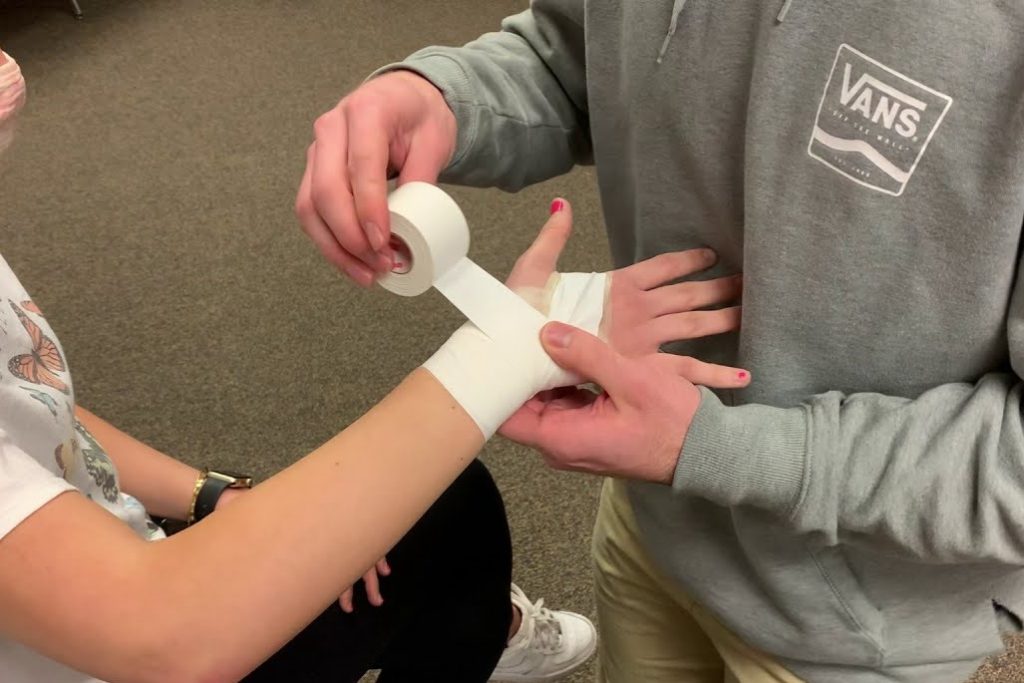
When playing ball in sports such as basketball and baseball, the wrist is utilised a lot during training and game time. This preventative taping technique works well as your basic wrist support.
Materials:
- Zinc Oxide tape (preferably 2.5 cm)
- Rigid Strapping Tape (preferably 3.8 cm)
- Foam Underwrap (optional)
- Adhesive Foam (optional)
- Bandage Scissors
Steps:
- While the hand is relaxed, envelop and wrist and a third of the lower hand with some foam underwrap. The underwrap should completely cover the joint of the wrist as well as the half lower back of the hand.
- Ball the hand into a fist for the anchors. The first anchor is made by wrapping a single strip of strapping tape a few centimetres below the wrist. Start this anchor on the thumb side of your arm, following the natural curve of your arm until it meets itself. The tape shouldn’t align perfectly. Instead, one corner of the edges should meet the other.
- Add another one or two anchors going up the wrist. The starting points of the next anchors should be overlapping with the previous one. The last of the anchors should reach the joint of the wrist and part of the back of the hand.
- At this point in the process, it’s time to test it out. Check if the player can still move their wrist to a certain degree. Most individuals only require the support of three anchors. If extra support is needed, proceed with the next step.
- This step requires the use of the zinc oxide tape. This time, we’re going down, not up. In a zigzag pattern, tape over only one side of the last anchor and continue going down. The tape should cover the wrist joint at the back of the hand and a part of the lower arm.
- Repeat steps 2 and 3. Finish the strapping by applying three additional anchors over the zinc oxide tape with the rigid tape.
- There are cases when this could be too much tape for the individual. If that’s the case, here’s what you gotta do before adding any anchors. Prepare the base of the palm and the inside of the wrist with some squares of adhesive foam.
For the Ankle
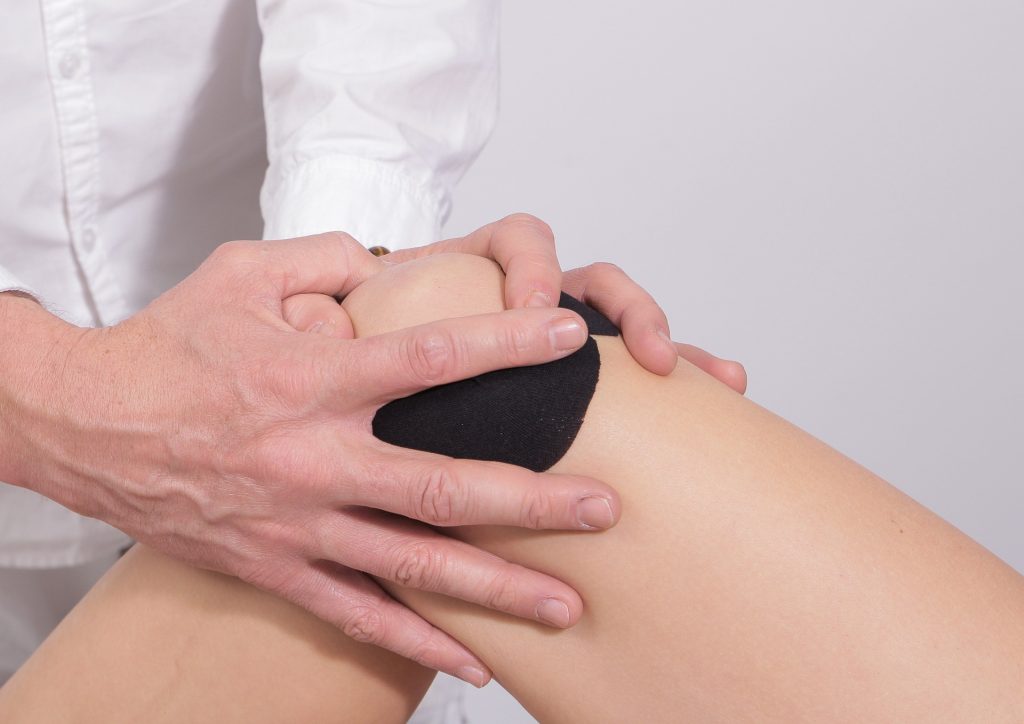
If you’re a fan of rugby or tennis, then you probably use your ankles a lot. Ankle sprains are prevalent in these types of sports. Luckily, there’s this athletic taping technique that can reduce your risk of such injuries.
Materials:
- Rigid Strapping Tape (preferably 3.8 cm)
- Elastic Adhesive Bandage (preferably 5 cm)
- Bandage Scissors
Steps:
- First, position the ankle forward, with the toes standing up and the sole exposed.
- Make anchors above the ankle and at least three stirrup straps going under the heel with the rigid tape.
- With the same tape, spiral the tape twice in a figure-6 position. Begin the process from the inner part to the outer part of the knee and back again.
- Behind the ankle region, try a half-heel lock for another layer of protection. Go about this technique by first placing the edge of the tape on the inner part of the lower leg. Then carefully wound the tape downward and then to the other side towards the front of the heel. At a 45-degree angle. manoeuvre the tape towards the bottom of the foot and across the inside of the heel. Let the tape pass back to the outside of the ankle. The technique should finish where you started at the lower leg
- The elastic adhesive bandage is used as an overwrap. Wrap the entire taped area with a spiral, figure-8 motion, covering the rigid tape completely for added support.
For the Knee
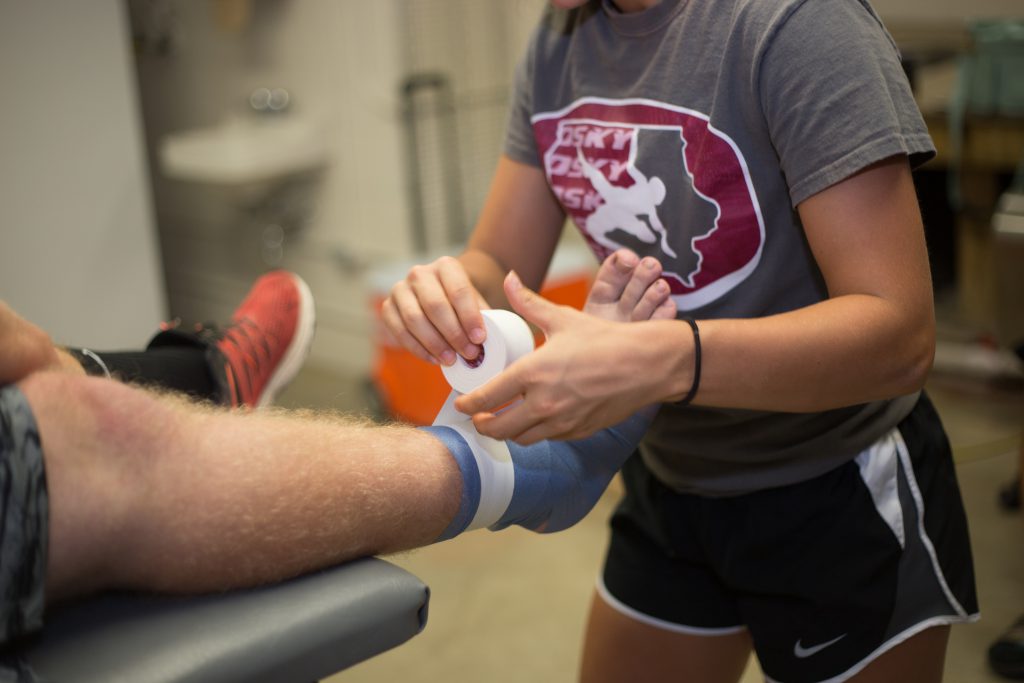
Common for football and volleyball players, knee injuries such as fractures and ACL ruptures are quite daunting. To give these sports professionals some peace of mind, use this effective athletic taping technique for your knees.
Materials:
- Rigid Strapping Tape (preferably 3.8 cm)
- Elastic Adhesive Bandage (preferably 7.5 cm)
- Bandage Scissors
- Any extra roll of tape you have readily available
Steps:
- Place a roll of your extra tape under the heel of your foot for support.
- Use elastic adhesive bandages as anchors above and underneath the affected knee.
- Put another layer or two of anchors over the previous ones with the rigid strapping tape
- Place two diagonal straps of rigid tape starting from the outside of the calf, leading to the inside of the knee cap and onto the inner part of the thigh
- Then, going in the opposite direction, apply another strap with the same tape. This time, starting on the inside of the calf, leading to the inside of the knee cap and onto the outer part of the thigh
- Repeat the taping process a few more times for added support.
- Cut out more rigid tape for two additional straps going vertical from the above anchors down to the bottom ones.
- As a means for extra stability, utilise more elastic adhesive bandage as an overwrap. In a figure-8 motion, overlap the tape over and around the knee joint.
Tips for Effective Taping
- Check for tape sensitivities – If the taped area starts to burn, blister, itch, or turn red, the person in question might be allergic. It’s best to ask a medical professional like a physiotherapist for tape alternatives if that’s the case.
- Prep and clean the skin – Make sure to sterilise the area with some mild soap and water. Another option is to use some antiseptics such as isopropyl alcohol right before taping. The skin should also be completely dry before any taping technique.
- Remove hair from the area – When using tapes like zinc oxide tape and elastic adhesive bandage, the presence of hair can interfere with their adhesion. It’s best to shave any hair in the area to be taped.
- Give the option of padding – some people won’t be able to handle the massive layers of tape for a specific taping technique. With the use of foam or adhesive tape as padding, give extra support around sensitive areas.
Athletic Taping as a Preventative Measure
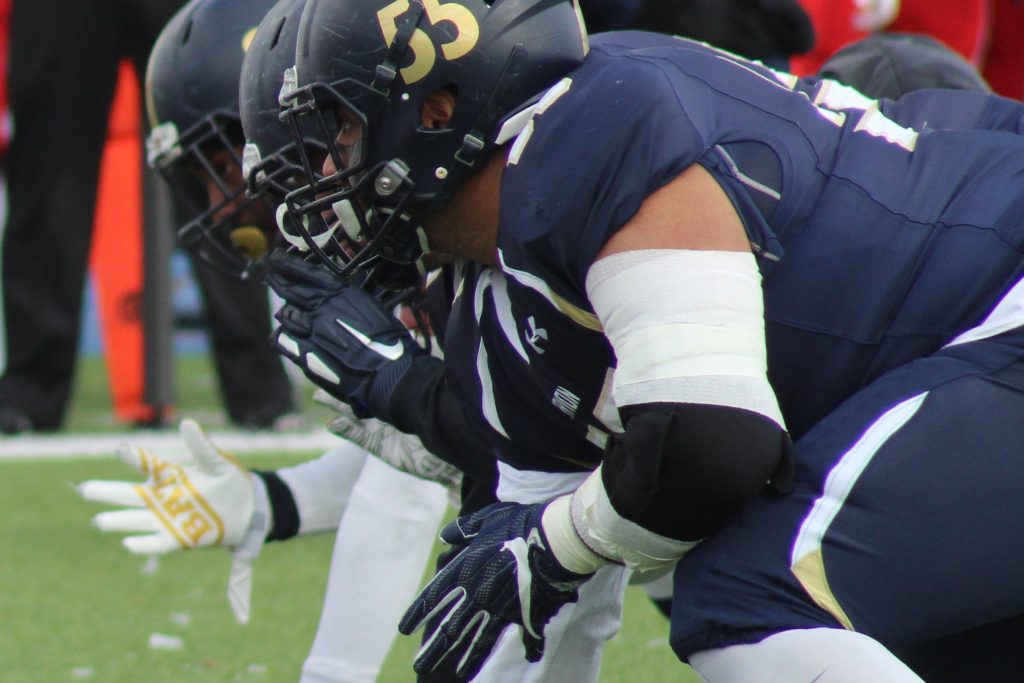
When it comes to preventative measures, one of the main options for players is always going to be athletic taping. This is especially true for athletes with a history of previous injuries. Using preventative athletic taping will not only protect the previously injured joint but also prevent any more damage from happening. In sports like rugby or cricket, it could even be crucial.
The Dubai Hurricanes is one of the leading sports clubs in Dubai. They have been supporting local sports players for the past 25 years. Their senior medic, Chrissy Foster, relays her insights on how athletic taping is used for preventative measures:
Players who have suffered ligament damages often need additional support. In rugby, athletes often have their ankles strapped to prevent eversion and inversion sprains. Rigid tape is applied as an anchor and stirrup(,) and then applied in Figures 6 or 8 to ‘act’ as the ligament. Ankle rolls are extremely common in the sport, and many players rely on this style of taping to keep the joint secure and stabilised. (Foster, 2024)
Athletic Taping on and off the Field
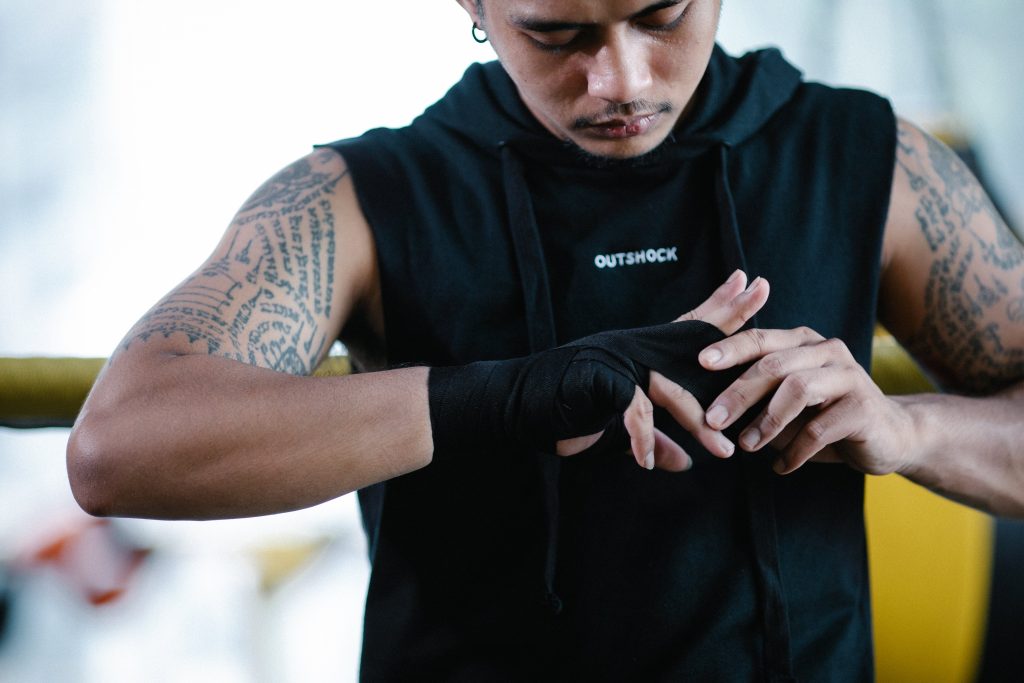
Athletic taping has been prominent in preventative measure techniques for years. Both for athletes and everyday individuals, it’s a very practical and convenient way to support and avert any future injury.
The Dubai Hurricanes’ Chrissy Fowler further elaborates on the importance of athletic taping. From the expert herself, here’s her take on the practice below:
Athletes may encounter a diverse range of joint injuries, not solely within their athletic pursuits but also in everyday activities. Even a minor misstep, such as rolling an ankle while ambulating, can lead to ligament damage or oedema surrounding the joint. The provision of adequate joint support for athletes is imperative, facilitating injury mitigation and prevention. Rigid tape serves as a vital tool in the medical arsenal, effectively acting as a surrogate ligament or tendon to enhance stability in compromised joints. (Foster, 2024)
Athletic taping works wonders for injury prevention, as you can see. These experts stand by their use in sports medicine as well as for regular everyday activities. However, for the taping to do its job, you need to use the right kinds of sports medicine tape.
How to Choose the Right Tape
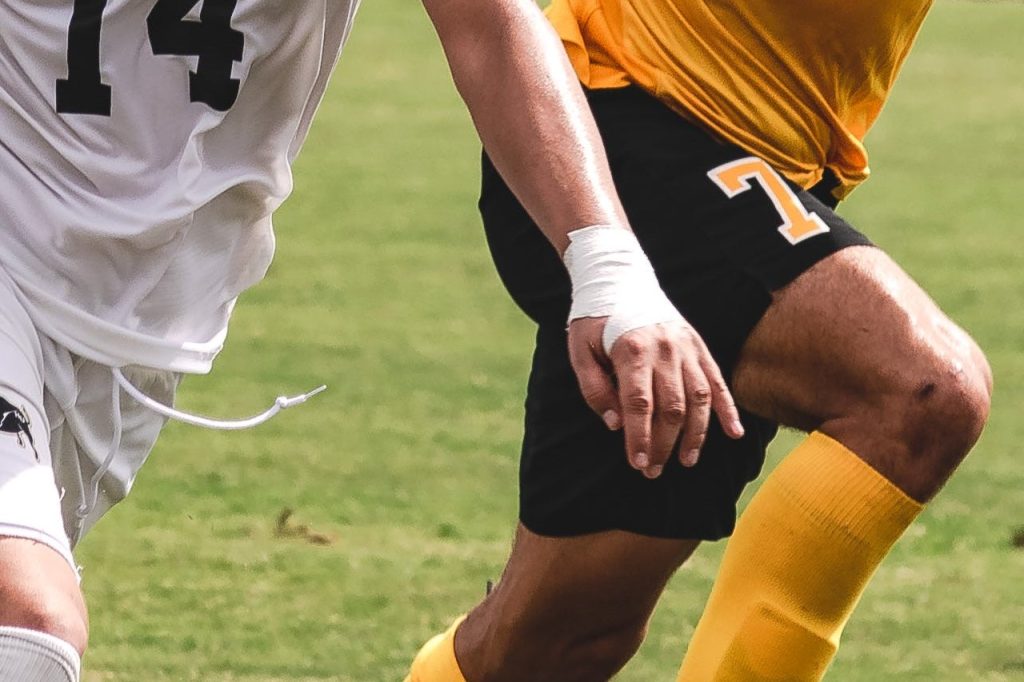
Five (5) major sports medicine tapes are typically used regarding sports injuries. These tapes are listed below, along with a brief description:
- Zinc oxide tape – Made out of cotton fabric with zinc oxide glue, it’s both for breathability and treating external wounds
- Rigid tape – Made out of cellulose fibre (rayon) with zinc oxide glue, it secures joints during play or any movement.
- Elastic adhesive tape – Made out of cotton and elastic with latex-based glue, it’s used mainly for compression
- Cohesive bandage – Made out of latex, yarn, polymer, and cotton with a thin layer of glue, this compression tape sticks well to itself.
- Tear-Light tape – Made out of an unwoven and elastic cotton base, it’s for securing injuries and for compression
As you can see, there’s a variety of tapes to choose from for both sports injuries and injury prevention techniques. For more guidance, two basic taping rules can help guide you in your decision. These rules are as follows:
- Use rigid strapping tapes when there’s a need for the restriction of joint movement. These include zinc oxide tape and rigid tape. This guide explains how rigid tape is used to immobilize joints.
- Use elastic adhesive tapes or bandages when there’s a need for the support and compression of joints and/or muscles. These include cohesive bandages and Tear-Light tape.
Lastly, you should check for the quality of the sports medicine tapes. Luckily, Gulf Physio has you covered for all your taping needs. You can be sure that all our products possess a high rating for the following qualities:
- The strength of the material
- The strength of the adhesive
- And a clean tear
Maintenance and Care of Athletic Taping for Injury Prevention
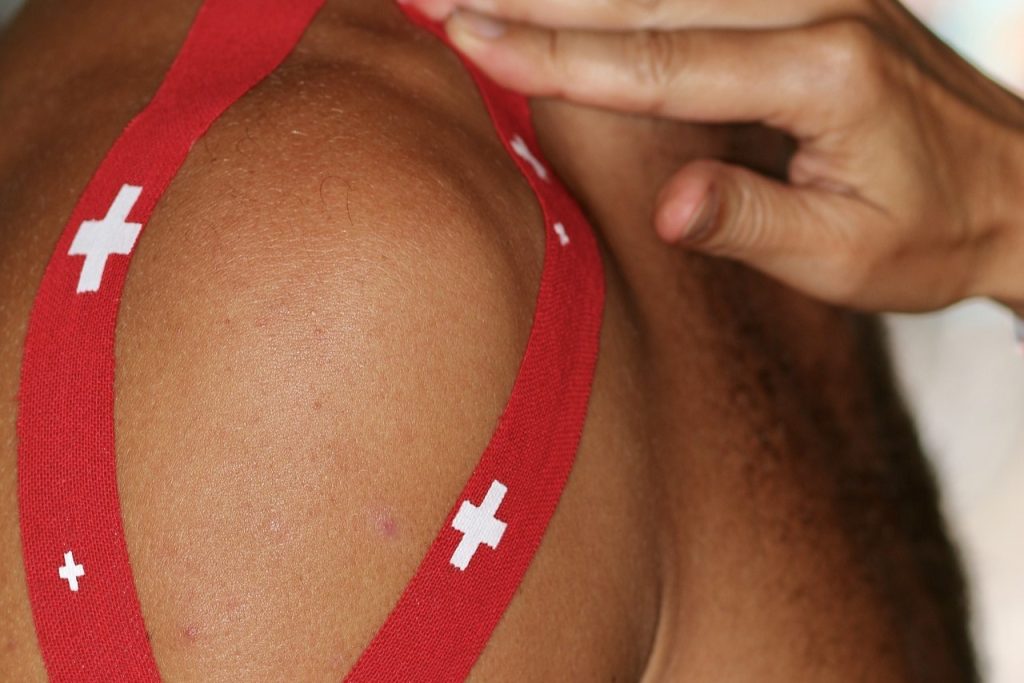
Sports medicine tapes are such a useful preventative measure anybody should have in their arsenal that it’s best to know to take care of them.
The Dos and Don’ts of Athletic Taping
Athletic taping is a precise science. You need to follow a couple of procedures to fully reap the benefits of proper athletic taping, preventative or otherwise. Here below are some of the standard rules of taping that could be of use in your athletic taping journey:
- Clean the area before putting any athletic taping on
- Use adhesive spray if needed
- Apply the tape step-by-step
- Wipe off excess residue if adhesive spray is used
- Layer and repeat if necessary
- Don’t keep the taped area wet
- Store tapes in a cool and dark place before and after use
- Don’t tear off from your body without using rubbing alcohol or tape remover
- Keep the tape and taped areas away from fire since some of them are flammable or can release toxic fumes
Preventative Athletic Taping Over Time
Any form of athletic taping has a purpose. Some techniques are meant to stay on for as long as possible or for the duration of a game. It depends on both the kind of tape itself and the reason for the athletic taping technique.
Athletic Taping in the Shower
Yes, you can wear athletic taping in the shower. Though remember, some sports medicine tapes can be removed with just a little water. Additional factors that may contribute to the adhesion of the tape after exposure to water are as follows:
- Temperature of the water
- Placement of the athletic taping
- Type of sports medicine tape
- Taping technique,
- Surface area exposed
- Purpose of the strapping
Tapes like kinesiology tape would stay on even after a long shower. The same goes for cohesive bandages since they are wrapped pretty tightly, but they do lose some compressive strength. Other tapes that will end up detaching themselves after water exposure are rigid tape and elastic cohesive bandages. Use an adhesive spray like Mtac for better adhesion.
There are circumstances where it’s best to leave the sports taping on. When taping is used for medical purposes, it’s supposed to be even when you shower. They shouldn’t get wet so medical professionals recommend using cast protectors during a bath. If it’s for physiotherapy purposes, particularly injury prevention, then take it off before you shower.
Athletic Taping in Bed
If the athletic taping technique is used for medical purposes, keep it on while sleeping. As for protection for a previously-injured area, it depends on the person. They can keep it on for as long as they think they need to since it could be helpful for that area.
If the strapping is used for preventative measures during a game without a previous injury, you can remove it right after. It also depends on the taping technique and the rigidity of the strapping itself.
Some compressive tapes are not advised to be used overnight because they might impede proper blood circulation. If somebody used more than the recommended tape straps, for instance. It would be advisable to either redo the taping technique the next morning or redo the entire thing before sleeping.
The Common Issues of Athletic Taping and How to Resolve Them
If the tape is making your skin itch
Apart from tape sensitivities, skin irritation can happen when the taping gets too wet or it’s on for too long. That’s why some people need underwrap as a base for their sports medicine taping. It’s also recommended that the athlete would leave off taping for a while after that use.
If the tape is coming off
Athletic taping can come off on its own when the anchors aren’t on correctly. Apply the correct pressure when layering the first anchors. The athlete should also have the area prepped and cleaned with no lotion beforehand. For the best results, cover athletic taping with wristbands or shoes and socks right after applying.
If the tape is wearing down
Sports medicine tape can lose its stickiness when worn for too long (usually after 24 hours to 2 days). By this time, the patient needs their athletic taping replaced with a new one. If the taping job is loose within that time frame, add more reinforcing tape pieces like anchors.
If the tape is too tight
Let the tape job loosen up by asking the athlete to move the taped area. They could do this by walking around the clinic or flexing their hand a couple of times. It’ll feel more comfortable after a few minutes. It could also be because the anchor straps are too tight as well. Any natural movement should fix the job.
In Conclusion
When it comes to any sport, there will be a risk of injury one way or another. The point of fields such as sports medicine and physiotherapy is to maximise the safety of everyone involved in sports. One of the prevalent ways medical professionals do this is by using athletic taping.
Athletic taping is well known for its ability to aid in healing injuries. Taping does this by restricting the movement of a limb or joint. What people might not know about it is that it’s also a game-changer when it comes to injury prevention.
Sports medicine tapes and their components have been used as early as 2,000 BC. Ever since, it has pushed through over the decades, emerging as one of the leading methods for aiding sports injuries. These injuries range from acute injuries (fractures) to even chronic ones (chronic pain).
Medical and sports professionals alike developed specific ways to bind joints for healing as well as injury prevention. Some of the more vulnerable areas of your body that may need some additional support are the wrist, ankle, and knee.
Preventative athletic taping is particularly useful for athletes who have experienced previous injuries. It helps keep that area safe while protecting it from any more damage. The preventative properties of taping can also be used effectively for everyday use. As long as you pick the right tape for the job, of course.
With athletic taping on, it should stay on. Before any taping can occur, please check the area for any possible allergies or circulation problems for safety. When that’s out of the way, it’s best to thoroughly clean the area. Adhesive sprays are available too for the more heavy-duty taping techniques.
If a player is using athletic tape as a preventive measure, take the tape off after the game. Maybe not keep the athletic taping on while sleeping or showering. It might interfere with proper blood circulation or adhesion respectively when worn for long periods.



